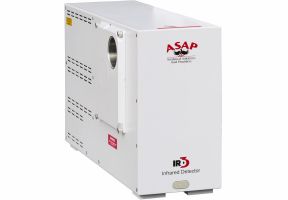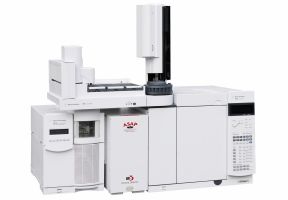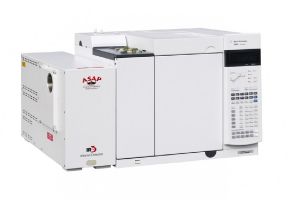IRD3
Molecular and Isomeric Identification for Gas Chromatography
The IRD 3 is the ONLY analytical infrared instrument that combines the separating power of the Gas Chromatograph with the molecular identification of FTIR.
Using a proprietary and internal light pipe interface, the IRD 3 provides a Vapor-Phase identification of your sample without the worry of polymorphism found in more costly solid-phase systems.
The IRD 3 KBr optics allow analysis of the full mid-infrared region (550-4000 cm-1) while ZnSe based systems stop at 650 cm-1. A ZnSe based FTIR system loses more than 10% of the fingerprint region which is critical to the accurate identification of isomers.
The IRD 3 provides structural and positional information to help the MSD resolve your isomeric challenges.
Vapor-phase FTIR
- Pseudo black-body IR source provides a larger energy curve than traditional sources
- KBr optics allow analysis of full mid-infrared region (550-4000cm-1)
- Long-life HeNe Laser
- A heated capillary flow cell
- Highest sensitivity MCT IR detector available
- Low Maintenance - No moving parts, No vacuum pump
- Smallest footprint available, < 9" wide
- Light pipe length optimizes chromatography
- 1mm optics and MCT detector designed to deliver the Hirschfield Advantage - reduced noise for higher sensitivity
- Seamless HW and SW integration with Agilent GC and GC-MS
GC-IRD
The IRD 3 incorporates the most straightforward design available for GC-FTIR and is the only convenient means to directly determine vapor-phase infrared spectra in an integrated, small-footprint, GC-IR system. This GC-IRD is a universal detector, and also provides SWGDRUG Level 1 complimentary technique to GC-MS.
In contrast to solid-state IR, vapor-phase IR eliminates issues caused by intermolecular hydrogen bonding, crystalline polymorphism and changes in physical state. Also, no other technique matches the highly reproducible spectra. Spectral features are not lost from overloading, therefore, optimizing library searching.
Combine the IRD 3 with the TITAN XL PTV GC Inlet for enhanced sensitivity.
- Coordination with GC Control-Software allows for single start-button
- Single sequence table runs both IRD and GC
- Single sequence table can be modified during acquisition
- Data snapshots can be taken before a run is complete
- Filter chromatographic data based on functional group
- Vapor-phase libraries available (> 10,000 compounds)
GC-IRD-MSD
A truly unique feature of the IRD 3 is the ability to interface with an Agilent GC-MS seamlessly. GC-IRD-MS is a powerful complementary combination of two SWGDRUG Level 1 techniques for determining the exact identity of your sample. MS detection methods have difficulties identifying analytes with non-specific fragmentation patterns and discriminating between positional isomers of an analyte. IRD is ideal for distinguishing between structural isomers whose electron-impact and chemical-ionization mass spectra are identical, making the GC-IRD-MSD the go-to solution for unknown identification.
- Collect IRD, MSD and GC data with a single mouse click
- IRD software designed to integrate with GC-MS software
- Single sequence table controls IRD, MSD, and GC
Software
The IRD 3 software incorporates data acquisition and data analysis. The ASAP Standalone Instrument Control (ASIC) system contains features needed to build IRD methods, calibrate the IRD optical path and initiate data collection.
- Single sequence table runs both IRD and GC
- Data snap-shot allows data analysis to begin before data acquisition has completed, a feature not possible with deposition type GC-FTIR
- Sequence tables can be modified to include urgent or rush samples without interrupting data acquisition
Data analysis is done using Essential FTIR®. This full-featured software makes the task of analyzing data quick and easy. Load an acquired chromatographic file, pick a peak of interest, view the spectra and search the results.
- Quick and easy isomeric identification with library search and spectral overlay
- Filter chromatographic data based on functional group
- Vapor-phase libraries available (> 10,000 compounds)
- Universal software also analyzes other spectroscopic data
Discuss the possbilities with one of our experts and they will give you the best advice for your analyses.



